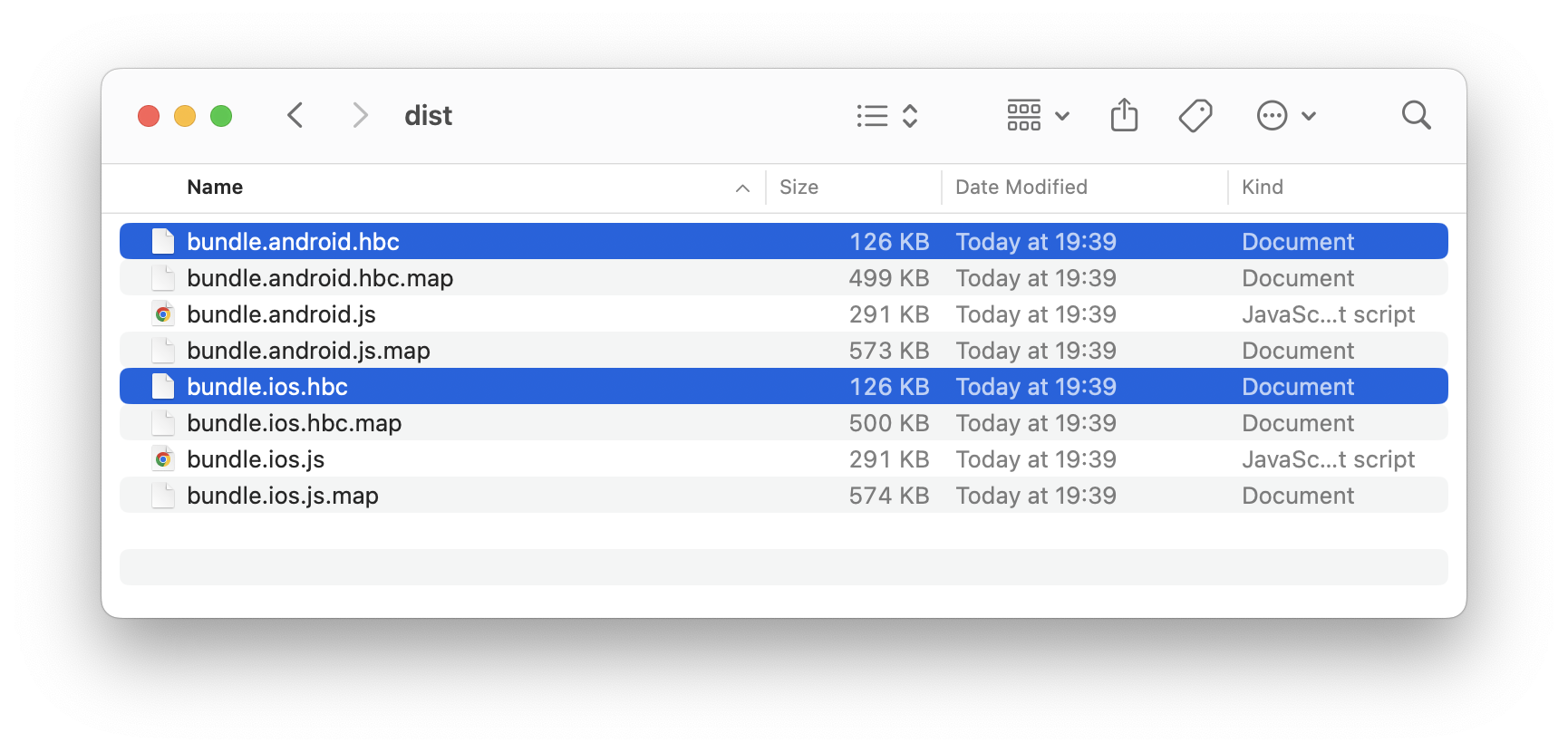Getting Started with Granite
Build your first enterprise-grade React Native microservice app in 10 minutes.
Prerequisites
Before you start, make sure you have these tools installed:
- Node.js LTS (22.12.0 recommended) - Download here
- Xcode (for testing in iOS) - Available from Mac App Store
- Android Studio (for testing in Android) - Download here
- Granite test app - Install on your iOS simulator or Android emulator (Installation guide)
1. Create Your Granite Project
Open your terminal and run the create command:
npx create-granite-app@latestpnpm create granite-appyarn create granite-appThe interactive CLI will guide you through setup:
$ npx create-granite-app@latest
┌ Create Granite App Project
│
◆ Project Setup
◇ Project name or path:
│ my-granite-app
│
◇ Select development tools:
│ ◻ ESLint + Prettier (recommended)
│ ◻ Biome
│
◇ ✅ Created Granite App successfully!
│
◇ Next steps ─────────────╮
│ │
│ cd my-granite-app │
│ npm install │
│ npm run dev │
│ │
├──────────────────────────╯
│
└ 🎉 Done! Your Granite app is ready.This creates a new directory with your project name and sets up the basic Granite app structure.
2. Install Dependencies
Navigate to your project and install dependencies:
cd my-granite-appnpm installpnpm installyarn install3. Understanding Your Project Structure
Your Granite project has a clean, organized structure:
my-granite-app/
├── pages/ # Screens in your microservices
│ ├── _404.tsx # 404 error page
│ └── index.tsx # Home screen
│
├── src/ # Source code
│ ├── _app.tsx # Microservice entry point
│ └── router.gen.ts # Auto-generated type-safe routing
│
├── granite.config.ts # Granite configuration
├── react-native.config.js # React Native settings
└── require.context.ts # Auto-generated routing contextKey files:
pages/- Each file becomes a screen in your appgranite.config.ts- Configure your Granite app (Reference)src/_app.tsx- The main entry point where you can add logic that's shared across all screens in your microservice
4. Start Development Server
Start your Granite development server:
npm run devpnpm run devyarn devYou'll see the Granite welcome screen:
██████╗ ██████╗ █████╗ ███╗ ██╗██╗████████╗███████╗
██╔════╝ ██╔══██╗██╔══██╗████╗ ██║██║╚══██╔══╝██╔════╝
██║ ███╗██████╔╝███████║██╔██╗ ██║██║ ██║ █████╗
██║ ██║██╔══██╗██╔══██║██║╚██╗██║██║ ██║ ██╔══╝
╚██████╔╝██║ ██║██║ ██║██║ ╚████║██║ ██║ ███████╗
╚═════╝ ╚═╝ ╚═╝╚═╝ ╚═╝╚═╝ ╚═══╝╚═╝ ╚═╝ ╚══════╝
Welcome to Granite
To reload the app press "r"
To open developer menu press "d"
To open debugger press "j"✅ Success indicator: You see the Granite ASCII art and development commands
5. Test Your App
Now let's see your app running in the Granite test app:
5.1 Install Granite Test App
If you haven't already, install the Granite test app on your simulator:
- Follow our installation guide
5.2 Run Your App
- Open your iOS Simulator (or Android Emulator)
- Launch the Granite test app from your simulator
- Connect to your development server:
- Ensure your
granite devis still running in the terminal - For Android users: Run
adb reverse tcp:8081 tcp:8081in a separate terminal to enable connection - In the Granite test app, tap "Open Dev Server"
- The app will connect to your local development server and load your React Native screens
- Ensure your
You should see your app's home screen loading in the native app!
✅ Success indicator: Your React Native screen appears in the native Granite test app
6. Create Your First Screen
Let's add a new screen to understand how Granite routing works:
6.1 Create a Profile Screen
Create a new file pages/profile.tsx:
import React from 'react';
import { View, Text, StyleSheet } from 'react-native';
export default function ProfileScreen() {
return (
<View style={styles.container}>
<Text style={styles.title}>Profile Screen</Text>
<Text style={styles.description}>This is your profile microservice!</Text>
</View>
);
}
const styles = StyleSheet.create({
container: {
flex: 1,
justifyContent: 'center',
alignItems: 'center',
backgroundColor: '#f5f5f5',
},
title: {
fontSize: 24,
fontWeight: 'bold',
marginBottom: 16,
},
description: {
fontSize: 16,
textAlign: 'center',
color: '#666',
},
});6.2 Navigate Between Screens
Update your pages/index.tsx to add navigation:
import React from 'react';
import { View, Text, TouchableOpacity, StyleSheet } from 'react-native';
import { useNavigation } from '@granite-js/react-native';
export default function HomeScreen() {
const navigation = useNavigation();
return (
<View style={styles.container}>
<Text style={styles.title}>Welcome to Granite!</Text>
<TouchableOpacity style={styles.button} onPress={() => navigation.navigate('/profile')}>
<Text style={styles.buttonText}>Go to Profile</Text>
</TouchableOpacity>
</View>
);
}
const styles = StyleSheet.create({
container: {
flex: 1,
justifyContent: 'center',
alignItems: 'center',
backgroundColor: '#fff',
},
title: {
fontSize: 24,
fontWeight: 'bold',
marginBottom: 32,
},
button: {
backgroundColor: '#007AFF',
paddingHorizontal: 24,
paddingVertical: 12,
borderRadius: 8,
},
buttonText: {
color: 'white',
fontSize: 16,
fontWeight: '600',
},
});Save the files and your app will hot reload automatically! 🔥
✅ Success indicator: You can navigate between Home and Profile screens
7. Build Your App
Ready to create production bundles? Let's build your app:
npm run buildpnpm run buildyarn buildGranite will create optimized microservice bundles, and your optimized bundles are now in the dist/ directory:

✅ Success indicator: You see built bundles, with sizes under 300KB each
🎉 Congratulations!
You've successfully created your first Granite app! Here's what you accomplished:
- ✅ Created a new Granite project
- ✅ Set up the development environment
- ✅ Built your first microservice screens
- ✅ Added navigation between screens
- ✅ Generated production-ready bundles
What's Next?
Now that you have a working Granite app, you can:
- Set up AWS Infrastructure - Configure CDN infrastructure for your bundles
- Deploy to Production - Learn how to deploy your bundles to AWS CDN
- Advanced Routing - Learn about type-safe routing and navigation
Need Help?
- 📖 Documentation - Complete Granite guide
- 🐛 GitHub Issues - Report bugs or request features